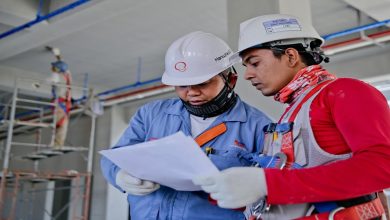Green Tech in Real Estate: The Top 10 Innovations Changing the Game

The real estate industry is experiencing a green revolution, driven by the growing demand for sustainability and environmental responsibility. Green technology is at the forefront of this transformation, offering innovative solutions that reduce carbon footprints, enhance energy efficiency, and promote eco-friendly practices. In this article, we will explore the top 10 green tech innovations that are changing the game in real estate.
Solar Energy Systems:
Solar energy systems are becoming increasingly popular in residential and commercial properties. Photovoltaic (PV) panels convert sunlight into electricity, reducing reliance on traditional power sources and lowering energy bills. With advancements in solar technology, installations are more efficient and affordable than ever.
Key Benefits:
Reduced energy costs
Lower carbon footprint
Increased property value
Energy-Efficient Windows:
Energy-efficient windows are designed to minimize heat loss and gain, improving a building’s insulation. These windows use low-emissivity (Low-E) coatings and double or triple glazing to reduce energy consumption. By maintaining consistent indoor temperatures, they enhance comfort and lower heating and cooling costs.
Key Benefits:
Improved insulation
Reduced energy consumption
Enhanced indoor comfort
Green Roofs and Walls:
Green roofs and walls are innovative solutions for urban areas with limited green space. These installations involve growing vegetation on rooftops and building facades, which helps to insulate buildings, reduce stormwater runoff, and improve air quality. Green roofs also provide habitat for wildlife and enhance urban aesthetics.
Key Benefits:
Improved insulation
Reduced stormwater runoff
Enhanced urban biodiversity
Smart Thermostats:
Smart thermostats are revolutionizing home heating and cooling by learning user preferences and adjusting temperatures automatically. These devices can be controlled remotely via smartphone apps, allowing users to optimize energy usage. Smart thermostats help reduce energy waste and lower utility bills while maintaining comfortable indoor environments.
Key Benefits:
Optimized energy usage
Lower utility bills
Enhanced comfort
LED Lighting:
LED lighting is an energy-efficient alternative to traditional incandescent and fluorescent bulbs. LEDs use significantly less energy and have a longer lifespan, reducing the need for frequent replacements. They are available in various colors and brightness levels, making them suitable for different applications.
Key Benefits:
Reduced energy consumption
Longer lifespan
Lower maintenance costs
Water Conservation Technologies:
Water conservation technologies are essential for sustainable property management. Low-flow fixtures, smart irrigation systems, and rainwater harvesting solutions help reduce water usage. These innovations are especially important in regions facing water scarcity and contribute to lower utility bills and environmental preservation.
Key Benefits:
Reduced water usage
Lower utility bills
Environmental preservation
Building Automation Systems:
Building automation systems (BAS) integrate various building functions, such as lighting, heating, ventilation, and security, into a centralized control system. These systems use sensors and software to optimize energy usage, enhance comfort, and improve building efficiency. BAS can be programmed to respond to occupancy and environmental conditions, reducing energy waste.
Key Benefits:
Optimized energy usage
Enhanced comfort
Improved building efficiency
Sustainable Building Materials:
Sustainable building materials are gaining traction in the construction industry. These materials, such as recycled steel, bamboo, and reclaimed wood, have lower environmental impacts than traditional materials. Using sustainable materials reduces waste, conserves natural resources, and promotes eco-friendly building practices.
Key Benefits:
Lower environmental impact
Reduced waste
Conserved natural resources
Geothermal Heating and Cooling:
Geothermal heating and cooling systems utilize the stable temperature of the earth to regulate indoor temperatures. These systems circulate fluid through underground pipes, transferring heat to or from the building. Geothermal systems are highly efficient and can significantly reduce heating and cooling costs.
Key Benefits:
Highly efficient
Lower heating and cooling costs
Energy Storage Solutions:
Energy storage solutions, such as battery systems, are becoming essential for properties utilizing renewable energy sources. These systems store excess energy generated by solar panels or wind turbines for later use. Energy storage solutions ensure a consistent energy supply, even during periods of low renewable energy generation.
Key Benefits:
Consistent energy supply
Maximized use of renewable energy
Lower reliance on the grid
Conclusion:
Green technology is revolutionizing the real estate industry, offering innovative solutions that enhance sustainability and reduce environmental impact. From solar energy systems and smart thermostats to sustainable building materials and energy storage solutions, these technologies are changing the way properties are built, managed, and operated. Embracing these green innovations is crucial for real estate professionals and property owners who want to stay ahead in an evolving market. As we move towards a more sustainable future, green tech will continue to play a pivotal role in shaping the real estate landscape, promoting eco-friendly practices, and improving the quality of life for all.





